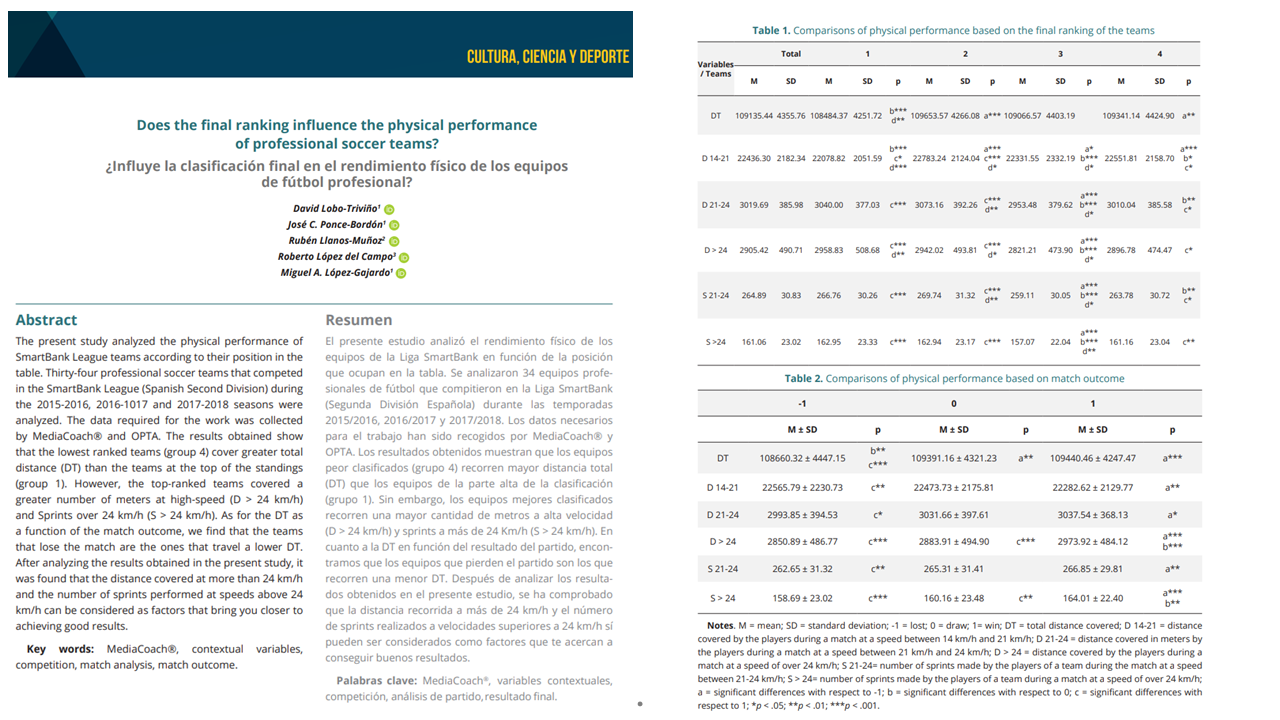
04 Jul Does the Final Ranking Influence the Physical Performance of Professional Soccer Teams?
Summary for coaches and performance staff
This study analyzed 34 professional teams from LaLiga SmartBank (Spanish Second Division) over three full seasons (2015–2018), using MediaCoach® and OPTA data. The aim was to understand whether league ranking and match results are linked to differences in physical performance during competition.
The findings reveal a pattern that every coach and performance analyst should consider:
- Lower-ranked teams covered more total distance, but less distance at high intensity.
- Top-ranked teams ran fewer total meters, yet performed more sprints and high-speed runs (>24 km/h).
- Teams that won matches showed higher sprint counts and distances than those that drew or lost.
In short: success in professional football is not about running more—it’s about running better.
Practical Applications for Coaches
- High-speed running and sprinting are key indicators of competitive success. Training sessions should replicate match-intensity bursts above 24 km/h rather than focusing solely on total distance.
- Efficiency beats volume — high-ranking teams achieve superior outcomes by managing when and how to accelerate or sprint, often within tactical structures that optimize effort.
- Load monitoring should emphasize the quality and context of high-intensity actions, not just kilometers covered.
- Match preparation should include scenarios that enhance sprint decision-making — when, where, and why players accelerate.
- For lower-ranked teams, reducing unnecessary low-intensity distance and improving sprint capacity could help bridge performance gaps with elite teams.
As the authors conclude, “the important thing is not to run a lot, but to run well.” This principle is increasingly central to modern training methodology, match planning, and player profiling in professional football.
Read the full paper: https://doi.org/10.12800/ccd.v18i57.2018


